

Yikang Sun
Hsienfu Lo
Hsienfu Lo

Jing Cao
Rungtai Lin
Rungtai Lin
College of Art & Design, Nanjing Forestry University, Nanjing 210037, ChinaGraduate School of Creative Industry Design, National Taiwan University of Arts, New Taipei City 22058, Taiwan
School of Media and Design, Hangzhou Dianzi University, Hangzhou 310005, China Author to whom correspondence should be addressed. Sustainability 2022, 14(12), 7188; https://doi.org/10.3390/su14127188Submission received: 25 April 2022 / Revised: 7 June 2022 / Accepted: 10 June 2022 / Published: 12 June 2022
(This article belongs to the Special Issue Cultural Industries and Sustainable Development)Apart from providing a haven, a home serves also as a place where people can develop their personalities and temperaments. Traditions within families are an often-unseen force that has a profound effect on people. In this article, the authors explore the meaning and value of family traditional inheritance in the current context and what manifestations may occur. After reviewing the history and characteristics of ancestral shrines, this study further examined the forms of expression used to express “home” and “family traditions” from the creator’s perspective. A conceptual framework is provided for subsequent case studies. Considering the role and importance of different creations in the transmitting of family traditions, a family memorial hall named “Qiyun Residence” and a series of paintings called “Home: Sweet Home” were created by members of this family to analyze and interpret family traditions. The importance of family traditions cannot be overstated, but they must be appropriately expressed. It is our aim that the examples presented in this article show how “Traditional” can be transferred to “Modernity” for the sustainability of culture.
In the social sciences, family traditions have become a long-standing and frequently discussed topic. The process of internationalization is causing people to be influenced by diverse cultures. Nevertheless, the more this is the case, the more we should emphasize our traditional culture. Maintaining and transmitting culture is more than just a slogan, but needs to be implemented in daily life. A nation’s traditional culture is considered an integral part of its cultural heritage. It is also true that the family has a significant impact on individuals. Cultural perpetuation may occur at the family level when tradition or spirits are transmitted from generation to generation. This may affect people’s outlook on life and their values [1,2,3,4,5].
A home not only provides a safe haven, it also provides a place for a person to develop his or her personality and temperament. The attitudes of family members and traditions have a greater influence on the character and development of individuals. This kind of sustainable development at the spiritual level requires our attention. Depending on life experiences, outlooks on life and values, etc., people have different impressions of home and family traditions. Thus, it would be beneficial if we could build a more universal model that would not only help to better preserve “family traditions”, but also serve as a reference for creation.
Two years ago, in Taishan District, New Taipei City, a family memorial hall named “Qiyun Residence” was built by members of the Lee family [6]. Generally speaking, the ancestral hall cannot be viewed the same way that it was in the past. Regardless of whether they are part of the inheritance of traditional culture or the continuation of family traditions, the ancestral halls should be worth preserving. However, the form of expression used should be examined further. As such, the following two points summarize the two objectives of this paper:
An example of how “family traditions” can be highlighted is illustrated by the ins and outs of a completed family memorial.
For the reader’s reference, this research aimed to construct some suggestions that can be used to plan and design a family memorial hall.
In Chinese society, ancestor worship has been widely recognized as one of the most significant cultural practices [7]. The ancestral hall of a family has significant meaning, as it represents the family’s history, tradition, and culture, as well as its celebration of ancestors. Nadeau [8] argues that Chinese ancestor worship is known for its association with the ritual celebration of the deified ancestors and tutelary deities of people with the same surname who are organized into lineage societies in ancestral shrines. This is why people commemorate their ancestors on special occasions, such as the Qingming Festival. They also write genealogies or take other forms to transmit the spirit of their ancestors. Many families do not have a memorial area at home. This presents several challenges for designers since it is difficult to find suitable examples of this type of design.
In the past, some large families used to construct ancestral halls in or near their homes. They kept such ancestral halls as places where family members could memorialize their ancestors. During that period, ancestral halls were not only examples of art and architecture, but also a repository for cultural heritage (see Figure 1).
With the renewal of the city, many of the old houses had to be demolished or rebuilt on their original sites. Some older houses or family gardens, due to their particular characteristics, have been designated as historical monuments. There may not be much space to live in the old house, but it is a memory of childhood for many individuals. Because of this, many people still return to their hometowns, even if they simply visit the places where their homes once stood.
It is true that, depending on the circumstances, not every family can afford to build an ancestral hall. However, the meaning of “home” may be both profound and subtle for people and may not be easy to describe in words. People often place photographs of deceased family members on their desks or in their wallets or they hang photos of deceased relatives in their homes. Based on this study, ancestral halls and photographs are merely different in form, but they carry the same connotations. Hence, it illustrates that the cherishing of family affection will not be diminished due to inadequate material conditions, but rather due to a sense of spirituality.
As described previously, there are many types of memorialization that are usually combined with limitations imposed by objective conditions. Consequently, the planning and design of a memorial hall are very different from what we are accustomed to. However, given the importance and value of the “spiritual level” of the family memorial hall, which is interpreted through Maslow’s Hierarchy of Needs [9], the “spiritual level” of the hall becomes more critical.
Culture has been described as “the way of life of an entire society” [10,11]. Typically, it refers to models of human activity, which provide meaning to human activity. Different cultures have different approaches to interpreting or evaluating human behavior. In the field of linguistics, anthropology, and sociology, culture is defined as the outcome of human civilization’s evolutionary process, a process that involves language, customs, religion, the arts, thought, and behavior [12].
To create high-quality living environments, creative professionals must be able to grasp the pulse of current society and use it as a guide when designing. They must ultimately reflect this ethos in specific design solutions. A few examples of the relation between form and ritual in creativity can be illustrated as follows: We go to the museum to see an object from hundreds of years ago and we are influenced by this object, not necessarily because of its form, but more importantly, because of the cultural connotations it carries. In this project, we attempted to interpret the culture and traditions of the time in a new way in order to design something that is compatible with modern aesthetic tastes and user habits (see Figure 2).
Similarly, ancestral shrines or family memory halls can be viewed in the same light. In order to be concise, it would not be feasible for most families to designate a space for an ancestral hall. Young people may not readily be attracted to a form such as an ancestral hall. Hence, this is one of the objectives of this study, namely to provide a new lease on life to these traditional ancestral halls through a modern, plain, formal idiom.
Through the application of creative thinking, traditional culture and rituals have been transformed into objects that meet the needs of modern society. Communication theory may be useful in explaining: (1) how these objects can arouse the interest of users; (2) how to effectively communicate the intentions of the creator; and (3) how to complete the cultural inheritance process.
Artists’ creativity is often described as a manifestation of their pursuit of beauty, characterized by a complementary process through which connotations are experienced through form; the connotations enrich the form [13]. Form (style) and connotation (concept) complement one another in the process of artistic creation. The question is, how does this relationship between connotation and form result in a creative visual concept? Form and connotation seem to be in close correspondence, so within the form, there seems to be some evidence of connotation. In the view of artistic production as a form of symbol transmission, an artist encodes into his work a particular message that is later decoded by the audience [14,15,16]. Investigating artistic creation from the perspective of audience decoding helps us better understand the artist’s creative process [17,18,19]. The levels of artistic creativity can be described as denotation and connotation [20,21]. It has been found that when it comes to successful communication between the artist (sender) and the viewer (receiver), certain requirements must be met on three levels [20].
In the past, most research on artistic creativity focused mainly on the artist and paid little attention to the viewer, yet the viewer plays a significant role throughout the creative process. The source of this article may be viewed as a compilation of life experiences, which is then finalized by being recognized by a majority of individuals. For this reason, whether it is design or artistic creation, creators should consider whether their works can forward information from the viewpoint of users or viewers during the process of conception.
Irrespective of whether it is a family memorial or an illustration of the daily life of a family, this study considers them to be “cultural products”. Cultures and traditions can appear in a form that meets the aesthetics and needs of individuals, and they play an important role in the process of cultural inheritance and the continuation of family traditions.
To develop cultural products, one must rethink or revise cultural characteristics and then redefine them to create a new product that can integrate into society and satisfy the cultural and aesthetic needs of consumers [10]. Incorporating cultural characteristics into products contributes not only to the economic growth of a society, but also promotes and preserves the culture of the region. The transfer of cultural characteristics to products will be of great benefit to improving the cultural connotation of products. Based on the combination of cultural levels, layers, and design features, as depicted in Figure 3, a framework is developed to assist in the understanding of the design of cultural products or other forms of artistic creation [22]. In the process of practical conception, four steps are used to design a cultural product, namely, investigation (setting a scenario), interaction (telling a story), development (writing a script), and implementation (finishing a work). The researchers also asked people who had visited the “Qiyun Residence” to provide their impressions. The collation and analysis of this feedback from family members and visitors further allows us to conduct a more comprehensive analysis.
Most ancestral halls that are still in existence have been constructed relatively early in history and have been correctly protected by being designated as historical monuments. As well as that, some ancestral halls or family mansions are also available to visitors after they have been approved. Thus, these efforts have been of great assistance in preserving and sustaining the culture as a whole. However, even if most people wish to create similar spaces for their families, they may encounter many difficulties. Firstly, there is not necessarily enough space; secondly, what kind of planning should be undertaken? Finally, what is the best way to utilize such a space? Aside from that, it will be a formality and will not serve the goal of sustainable development of culture and family traditions.
In light of the aforementioned factors and the study’s objectives, we selected an already completed family memorial as a case study to explore the process of designing it in depth. Meanwhile, we discuss the importance of various forms of artistic expression in passing down cultural traditions through the artwork created by a member of the family.
In addition to the completion of “Qiyun Residence” by the end of 2020, we conducted pilot research surrounding it, primarily to explore the design process [23]. In this study, some of what was previously completed is moderately cited.
Furthermore, some of the images in this article were taken by a member of the Lee family. Importantly, the research team was able to gather first-hand information about the case thanks to the permission of the owners of “Qiyun Residence”. As a result, the study can be analyzed objectively and comprehensively.
With the development of society, people’s incomes have continued to rise, and the quality of life has improved significantly. With the advent of human-centered design, the concept of object-oriented design has evolved and become a concept that concentrates on the “desires” of consumers [24]. Consumers also seek to assert themselves on a psychological level, in addition to satisfying their physiological needs. Under these economic conditions, it is not uncommon for “desires” to exceed “needs”, which is also indicative of the future development of the design. Conceptually, “Qiyun Residence” begins on the level of spiritual needs and exercises its value.
There is a memorial hall named “Qiyun Residence” (see Figure 4) built by the Lee family to commemorate the deceased parents and it has been built on the original site of the Lee family’s old residence (see Figure 5). To name the memorial hall, they combined a Chinese character from their father’s and mother’s names. The idea for this memorial originated from the family’s eldest son and his wife. There were other family members involved in the design and planning of the memorial. Having worked together as a team, the memorial hall was completed on schedule (see Figure 6).
The family memorial hall is not commonly found. Evidently, if one plans and designs in accordance with the style of the ancestral hall as it existed in the past, one is not taking into account the aesthetics and functional needs of today. Furthermore, the study suggests that more effectively integrating the concept of a people-oriented memorial into the planning and design of a family memorial is one of the keys to its success. This study further encapsulates the basic design concept of “Qiyun Residence” in the following three aspects:
In its overall design, “Qiyun Residence” opted for a modern and minimalist aesthetic. Meanwhile, the decoration of the space features details, such as a drawing of the genealogical tree and many photographs of family members, so that the people who enter this space will be filled with memories.
It is true that most memorial halls (or ancestral halls) have a very traditional design. However, the simple design is more suitable for the aesthetics of modern people, as well as being functional.
Through the establishment of this memorial, the family members hope that the local cultural characteristics and aesthetics will be promoted to the extent that it will become a cultural and educational center for the community. It is true that many sages have influenced people through their actions in many places.
The primary purpose of the family memorial is to commemorate the ancestors, which may limit its usefulness. In contrast, “Qiyun Residence” uses a creative approach to strike a balance between the two. In actuality, as has been emphasized many times previously, modern people have limited living space and it is difficult to create a special memorial hall in this limited space. So, it would be a double win if the memorial hall also served as a living room. Therefore, the functional level of design cannot be neglected. For a variety of reasons, many of the family’s old houses were demolished. Due to the long period of time that has elapsed since the old houses were built, they may no longer be suitable for living in. However, each of their bricks holds a great deal of sentimental value to the family members. Therefore, even if it is rebuilt on the original site, it may feel that something is missing, such as childhood memories. Our goal is to pass on these family traditions to future generations through memorials or other means.
To be more precise, the purpose of the “Qiyun Residence” is to miss parents, bring families together, and inherit family traditions. Accordingly, all designs are based on this concept. For example, the old photographs tell the story of the past and are used as part of the decoration of the room. In order to underscore the importance of the commemorative space, the designer aims to simplify the choice of style and form.
As the planning and details of the four open spaces in the memorial have already been described in the previous article [23], this article will be limited to showing photos of these spaces with simple explanations (see Figure 7, Figure 8, Figure 9 and Figure 10).
There is an important distinction to be made: whereas space is limited, emotions are infinite. If necessary, pictures can be replaced on the wall. As a result, during special events, people have the option of changing their photographs. Furthermore, a large number of photographs are stored in the cloud and, at any time, family members can access the online photos that are not physically displayed as a result of limited space. It also offers a different perspective for families with limited space. Involvement between family members is constant and continuous. Through this non-fixed display or digital technology, people can view these photographs at any time.
A specific explanation of the design and purpose of the genealogical tree on the wall should be given (see Figure 11). Many photographs of family members are displayed with concise and friendly words. All of this is associated with the feelings of affection felt by each member of the family. This encapsulates the essence of “ritual sense”.
Sandy Lee, as a member of the Lee family, is well-versed in the cultural connotations and spiritual significance of her family. In her subsequent work, she created a series of paintings with the title “Home: Sweet Home” (see Table 1), which not only serve as a two-dimensional reproduction of the family memorial in the previous section, but also enable the audience to comprehend how the family relates together and how the family spirit is inherited. Despite having smartphones, the authors believe that modern people can record their interactions with their families at any given time. Even so, if one is able to portray warm family affection through a paintbrush (or other means), it can undoubtedly increase the level of enjoyment for the creator.
Sandy Lee, as a self-trained artist, does not share the mindset of an academy school-trained painter, but expresses her understanding of art in a simple and unpretentious way. A series of Sandy’s paintings inspired by traditional Chinese poetry had previously been completed [18,25,26,27,28,29]. As a result, she is more acquainted with artistic creation and has a deeper appreciation for it, but more importantly, she can express her views more freely.
The paintings in Table 1 demonstrate that Sandy has gradually developed a unique style. In her work, she attempts to document the deep feelings and happy atmosphere between family members using bright colors and condensed brushstrokes. The painting in Figure 12 illustrates a joyful atmosphere when three generations come together.
Not only in the Chinese world, but also in many other countries or regions, family members gather when special festivals take place. People often take a family portrait during this time. Even so, Sandy decided to get a paintbrush and capture such a special moment with her feelings for family members. At this moment, the atmosphere of the painting is important and it may not be necessary to depict each individual in realistic detail.
People without formal training in painting may be worried that they will not be able to paint in the details of their characters and can focus on the creation of the aesthetic of the picture. In summary, people can better identify the cohesion and the strong emotions of the family during the creation process.
According to the members of the Lee family, the “Qiyun Residence” is unique, not only the first one but the only one. Although it is intended for other people because there is no common memory, recollection, or perception, “Qiyun Residence” may not have any significance to non-family visitors. However, “Qiyun Residence” offers an alternative approach to planning a memorial space for a family. It is argued in this study that anyone can create a memorial space for their own family, regardless of the amount of space available. Since there are various ways to present forms, connotation is the most important consideration. The “Qiyun Residence” is a new project, so there are certain limitations and shortcomings. It is hoped that the “Qiyun Residence” will be able to provide insightful information and suggestions for readers.
Most families find it difficult to create an independent memorial space, so choosing artwork to serve as a record of the family’s traditions and daily life is perfectly acceptable. From a different perspective, the family memorial provides family members with the opportunity to reflect on the past, and Sandy’s paintings allows them to appreciate the present (see Figure 13).
It is our intention to provide different suggestions to our readers. It may be possible to find more ideas for readers interested in different forms of expression, such as a “family memorial” or a “home-themed painting”. However, since this article only analyzes the creation of one painter for the time being, its applicability needs to be proved in future studies.
As a result of space limitations, most families do not design or plan a dedicated memorial space in their homes. Perhaps not everyone will paint their family members as a way to express their love. In other words, form is not of great importance. Each of the cases (“Qiyun Residence” and paintings) discussed in this study has its own peculiarities. The Lee family, for instance, has a relatively independent space that can be used for a memorial hall. The artist Sandy Lee, on the other hand, is interested in painting and has picked up a paintbrush after retiring and has been exploring color and brushstrokes. Through communication with creators, this study considers:
If no separate space can be found, people can refer to the model of “Qiyun Residence” and can use a corner of their home or a small room that is temporarily unused for a moderate transformation, so that a miniature version of the family memorial can be created. In the same way as the conference rooms and reading rooms described earlier, some readers may consider them to be relatively simple. However, space serves only as a means of transport and it is the inner thing that can bring family members together and let them pass down family traditions. To put it simply, it is similar to how many people keep photos of their family in their wallets or on their desks.
Due to the popularity of smartphones and cameras, people have the opportunity to become photographers. They can capture their family moments whenever they like. However, it is possible that these images remain on the phone for long periods of time and that the individuals will not take the time to examine them. With the advent of photographs, the art of painting is not completely eradicated, and people are willing to pick up paintbrushes and paint in their own way. Not only can these paintings be hung in the memorial space, but they also have the opportunity to become a source of inspiration for people. Furthermore, by utilizing the art of painting, the creator is also able to enjoy the challenges and pleasures that are inherent in the creative process that is unmatched by the act of pressing a shutter.
Through the introduction and discussion of the above cases, the authors aimed to provide a relatively unique style for interested audiences or researchers. Furthermore, in the cases selected for this study, their creators were effectively able to convey their ideas in an informal and rustic manner.
Last but not least, the authors conclude the article with the content shown in Figure 14. On the left side of the picture is the old house (which is no longer inhabited) of the Lee family. The building on the right, which had the same color as the old house, was rebuilt later (“Qiyun Residence” resides on the first floor of this building). Since the courtyard was converted into the current building, the family’s living surroundings have been greatly enhanced, allowing not only different families to enjoy some privacy, but also allowing the members of the Lee family to reunite, and all this is consolidated in the old house that carries many memories. It also demonstrates that with the advancement of the times, what has changed is form and material, while what has remained constant is ritual and spirit. It is this that represents the essence of sustainable development.
COVID-19 has caused many events scheduled for the “Qiyun Residence” to be canceled or postponed. While feedback from visitors may not constitute significant evidence, it may allow us to gain a better understanding of what others think about the monument from a variety of viewpoints. Future research will also examine its relation to the sustainable development of culture, as well as how it can enhance the role of the memorial. It is also necessary to conduct future research to validate this design suggestion and its contribution to sustainability. Furthermore, Sandy’s paintings have been used in the development of our latest research plan, in which we examine whether the audience will perceive a sense of connection between family members, as well as its impact on personal character development.
Resources, writing—original draft, Y.S., H.L., and J.C.; writing—review and editing, R.L. All authors have read and agreed to the published version of the manuscript.
This research was provided by the Start-up Fund for the Research of “Metasequoia Teachers” of Nanjing Forestry University under Grants No. 163103090.
The authors sincerely thank the Lee family for allowing us to use the pictures of “Qiyun Residence” for free. At the same time, the authors would like to thank Sandy for authorizing us to use her paintings. The authors also wish to express their gratitude to all the anonymous editors and academic editors who provided invaluable comments.
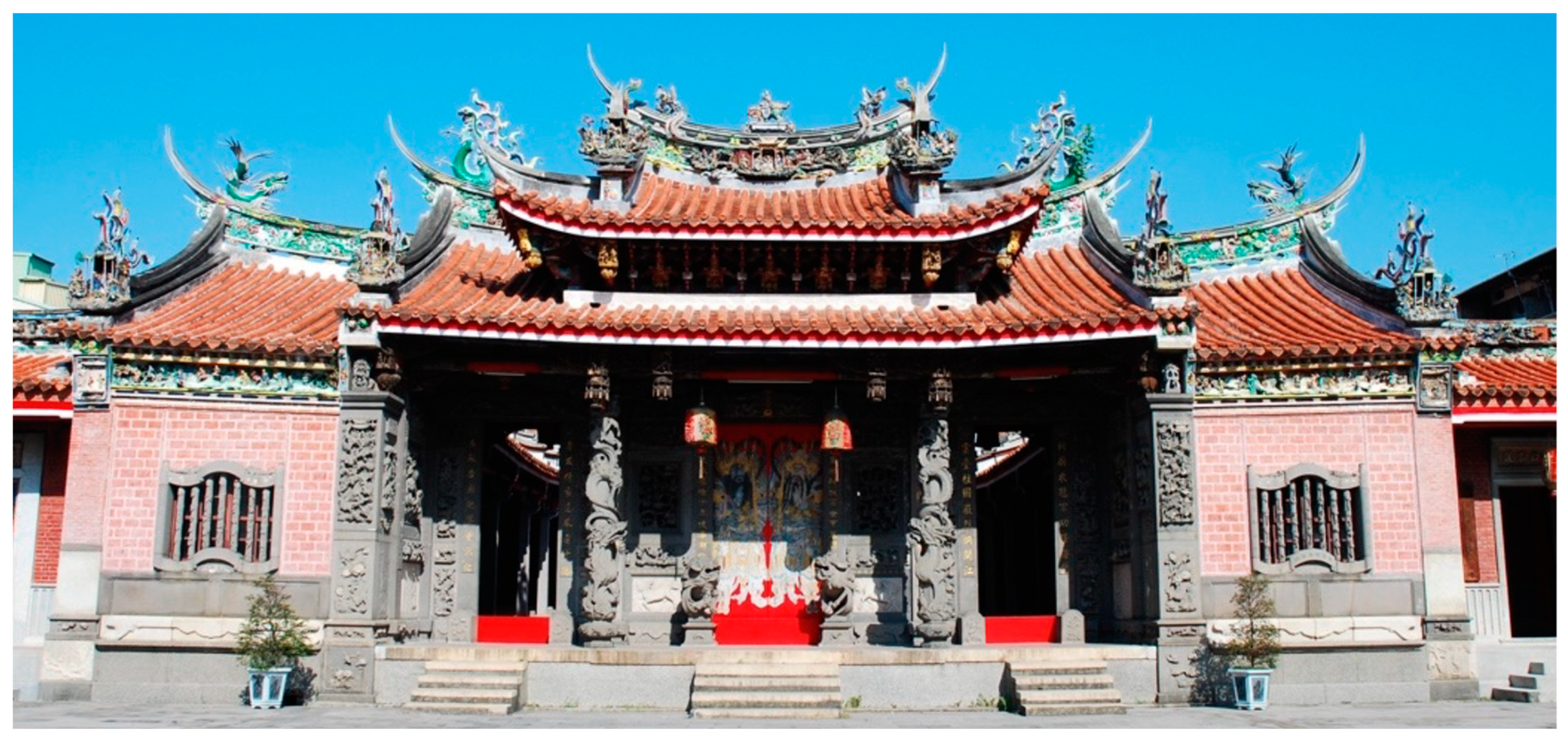

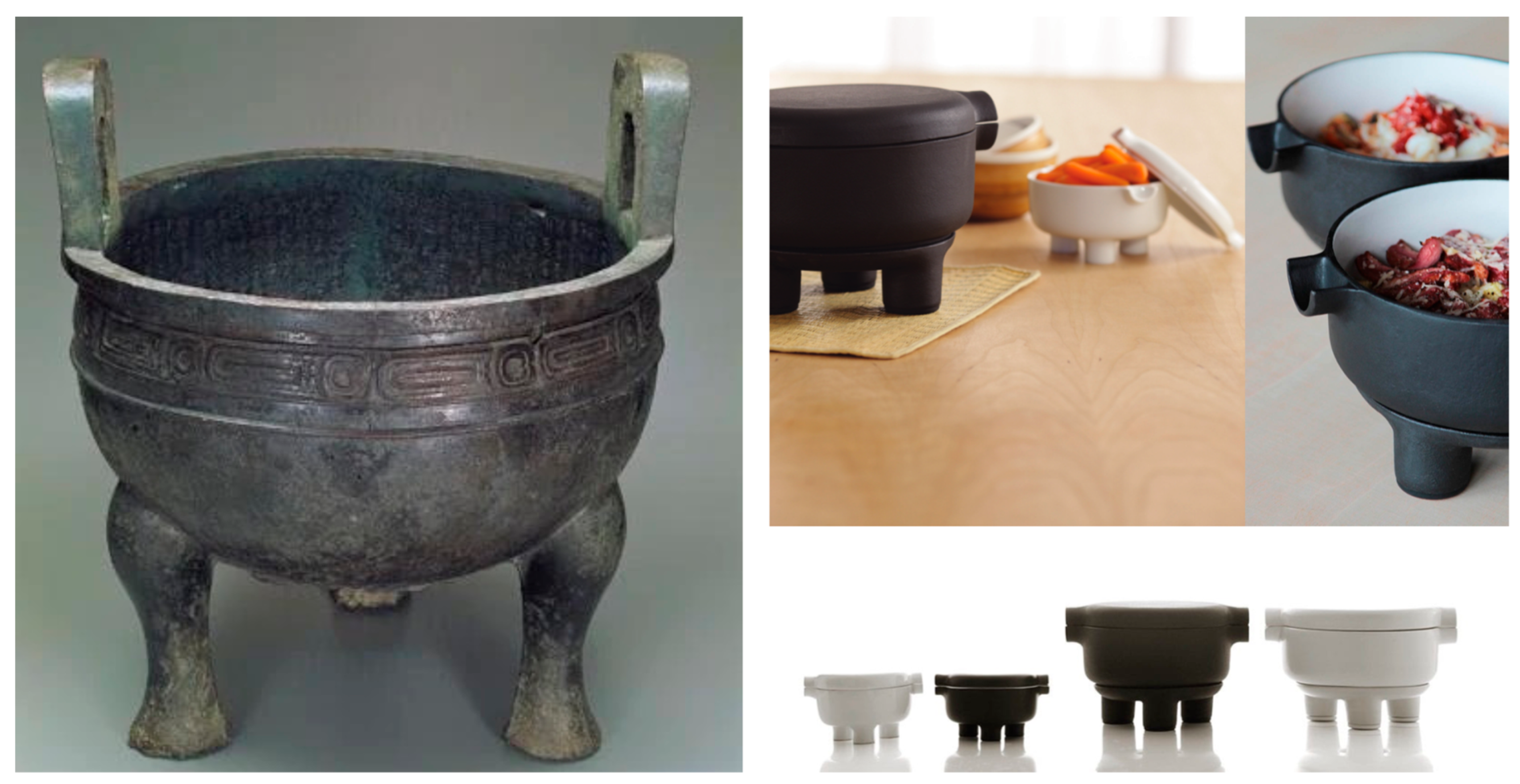
Figure 2. From Ding (prehistoric and ancient Chinese cauldrons) to modern cookware. On the top left is Mao Kung Ding , collected by the National Palace Museum. Other cookware is designed and manufactured by JIA.
Figure 2. From Ding (prehistoric and ancient Chinese cauldrons) to modern cookware. On the top left is Mao Kung Ding , collected by the National Palace Museum. Other cookware is designed and manufactured by JIA.

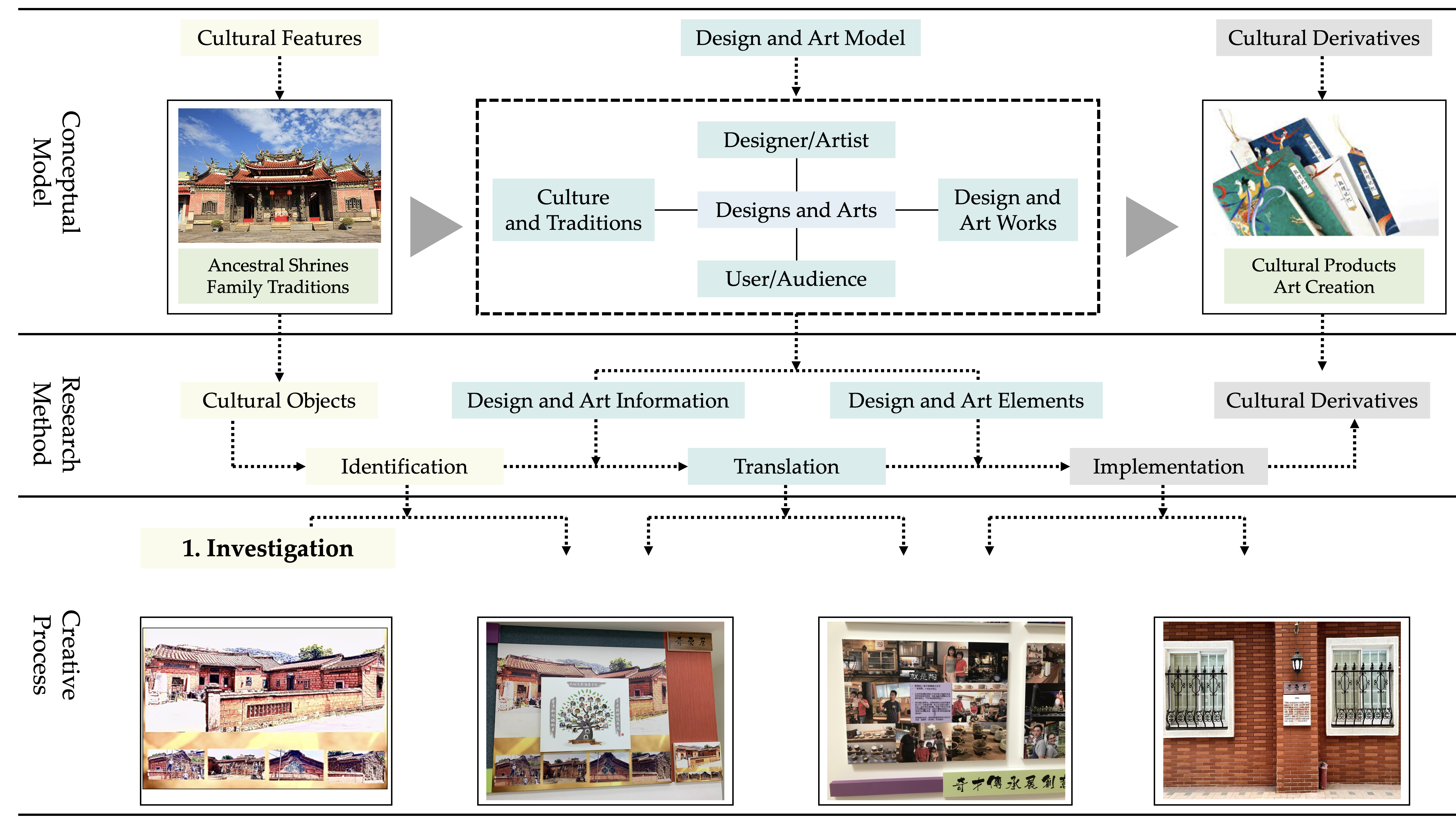

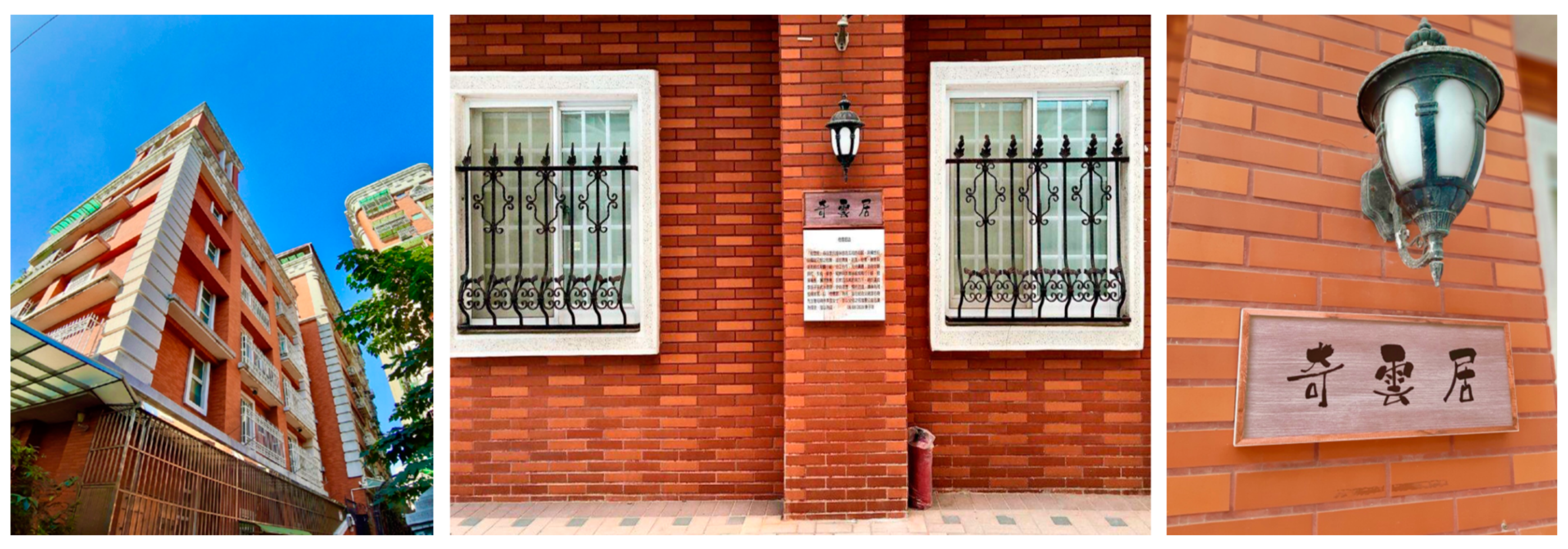
Figure 4. The façade and plaque of the “Qiyun Residence”, Taishan District, New Taipei City. The Lee family continues to cherish the memories of the past in this memorial.
Figure 4. The façade and plaque of the “Qiyun Residence”, Taishan District, New Taipei City. The Lee family continues to cherish the memories of the past in this memorial.

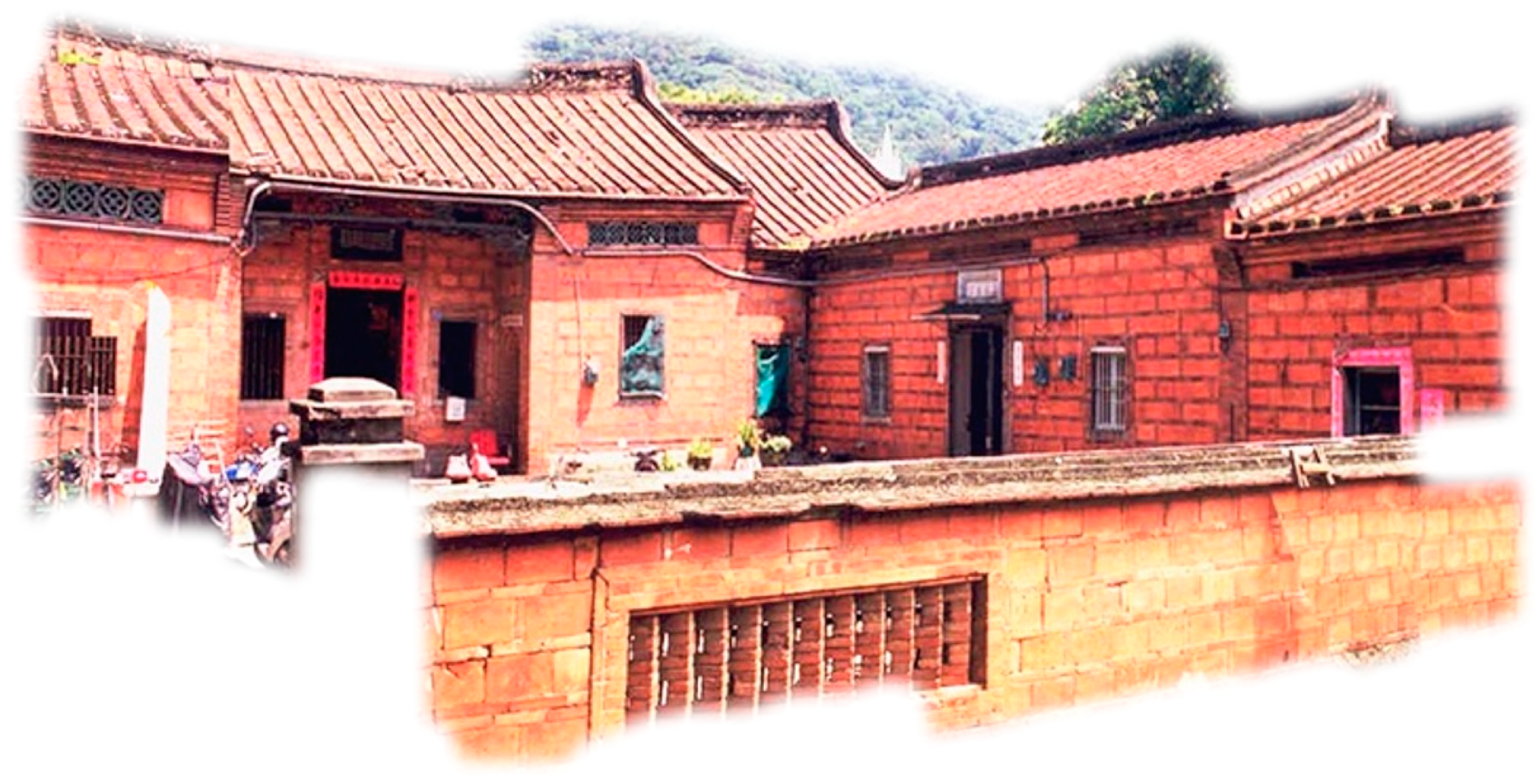
Figure 5. The ancestral house of the Lee family. The old house is still on the original site, and although it does not play a residential role, it is a link between the members of the Lee family. For the Lee family, this ancestral house is full of memories.
Figure 5. The ancestral house of the Lee family. The old house is still on the original site, and although it does not play a residential role, it is a link between the members of the Lee family. For the Lee family, this ancestral house is full of memories.

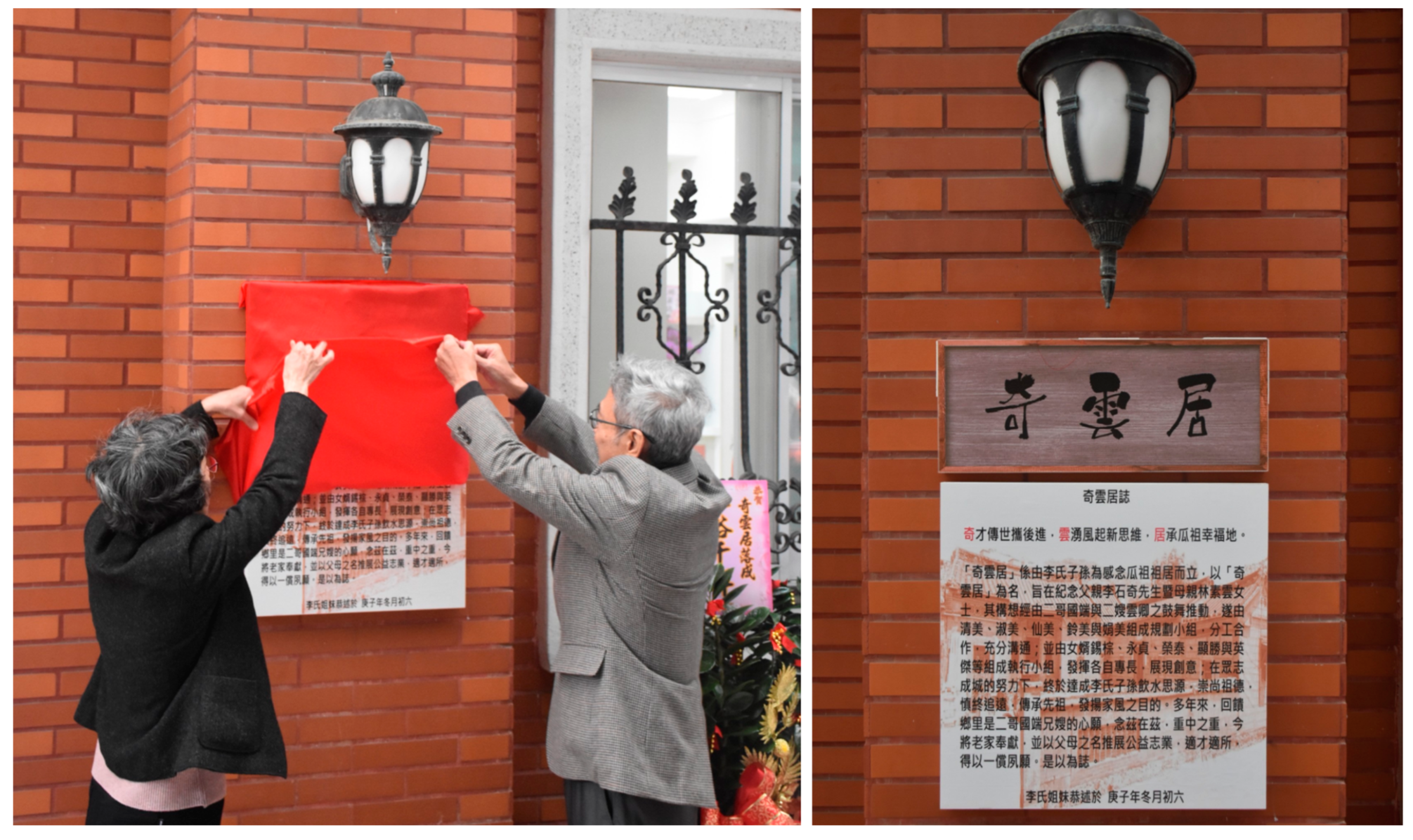

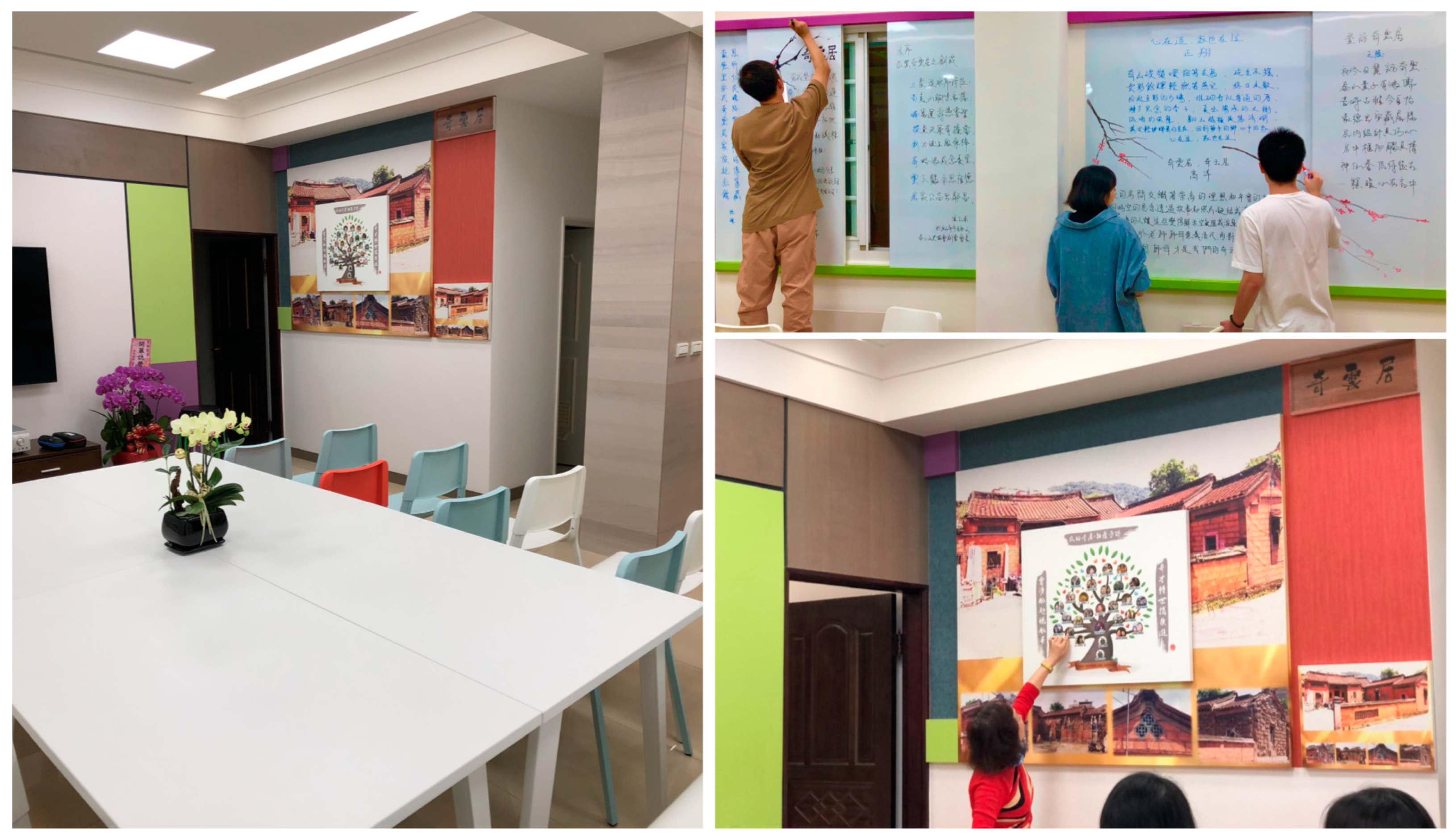
Figure 7. The spacious and bright meeting room is not only a place for family members to discuss things, but also a space for entertaining visitors. The host will introduce you to the ins and outs of the memorial here. At the same time, family members or visitors can also write down their feelings on the whiteboard. (Source: authorized by Lee family).
Figure 7. The spacious and bright meeting room is not only a place for family members to discuss things, but also a space for entertaining visitors. The host will introduce you to the ins and outs of the memorial here. At the same time, family members or visitors can also write down their feelings on the whiteboard. (Source: authorized by Lee family).

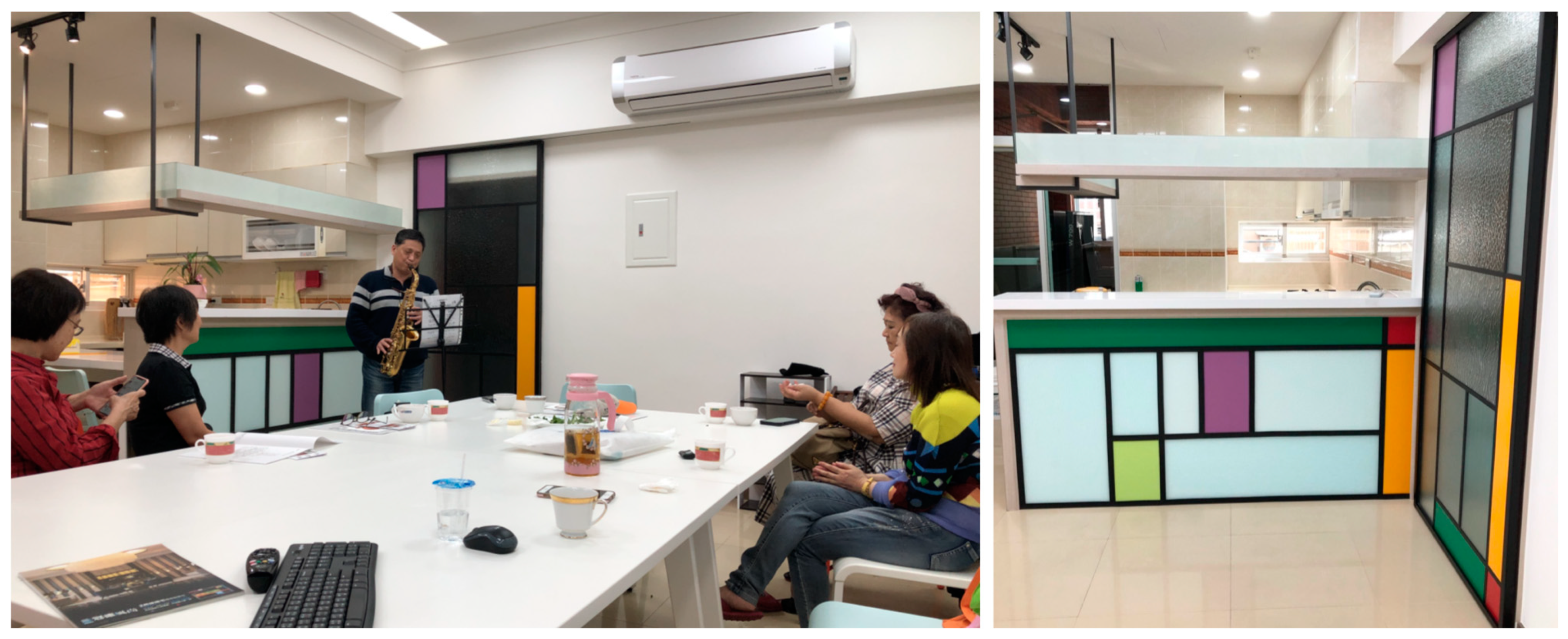
Figure 8. Bar area. This area is planned for family members and visiting friends to relax. The design, which references the Mondrian’s style, makes this space even more interesting. (Source: authorized by Lee family).
Figure 8. Bar area. This area is planned for family members and visiting friends to relax. The design, which references the Mondrian’s style, makes this space even more interesting. (Source: authorized by Lee family).


Figure 9. Reading room. In the future, books and materials related to family members will be continuously added to the shelves. (Source: authorized by Lee family).
Figure 9. Reading room. In the future, books and materials related to family members will be continuously added to the shelves. (Source: authorized by Lee family).

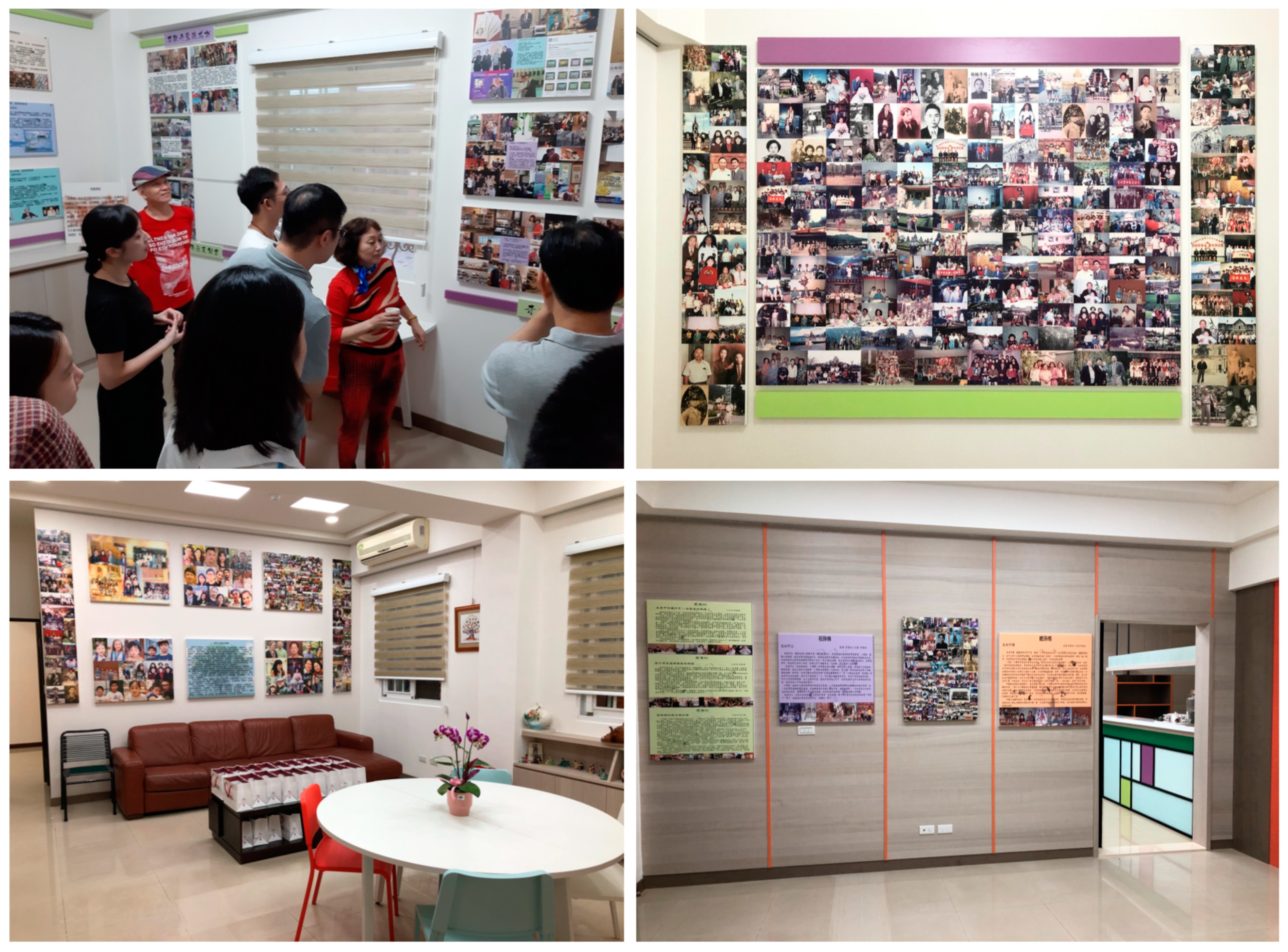
Figure 10. The family activity and information space. The walls are covered with photographs of family members from different periods. The photos are either distributed by a specific subject or arranged by the time they were taken. In the image in the top left, Sandy tells visiting friends the story behind the photos on behalf of the family. (Source: authorized by Lee family).
Figure 10. The family activity and information space. The walls are covered with photographs of family members from different periods. The photos are either distributed by a specific subject or arranged by the time they were taken. In the image in the top left, Sandy tells visiting friends the story behind the photos on behalf of the family. (Source: authorized by Lee family).

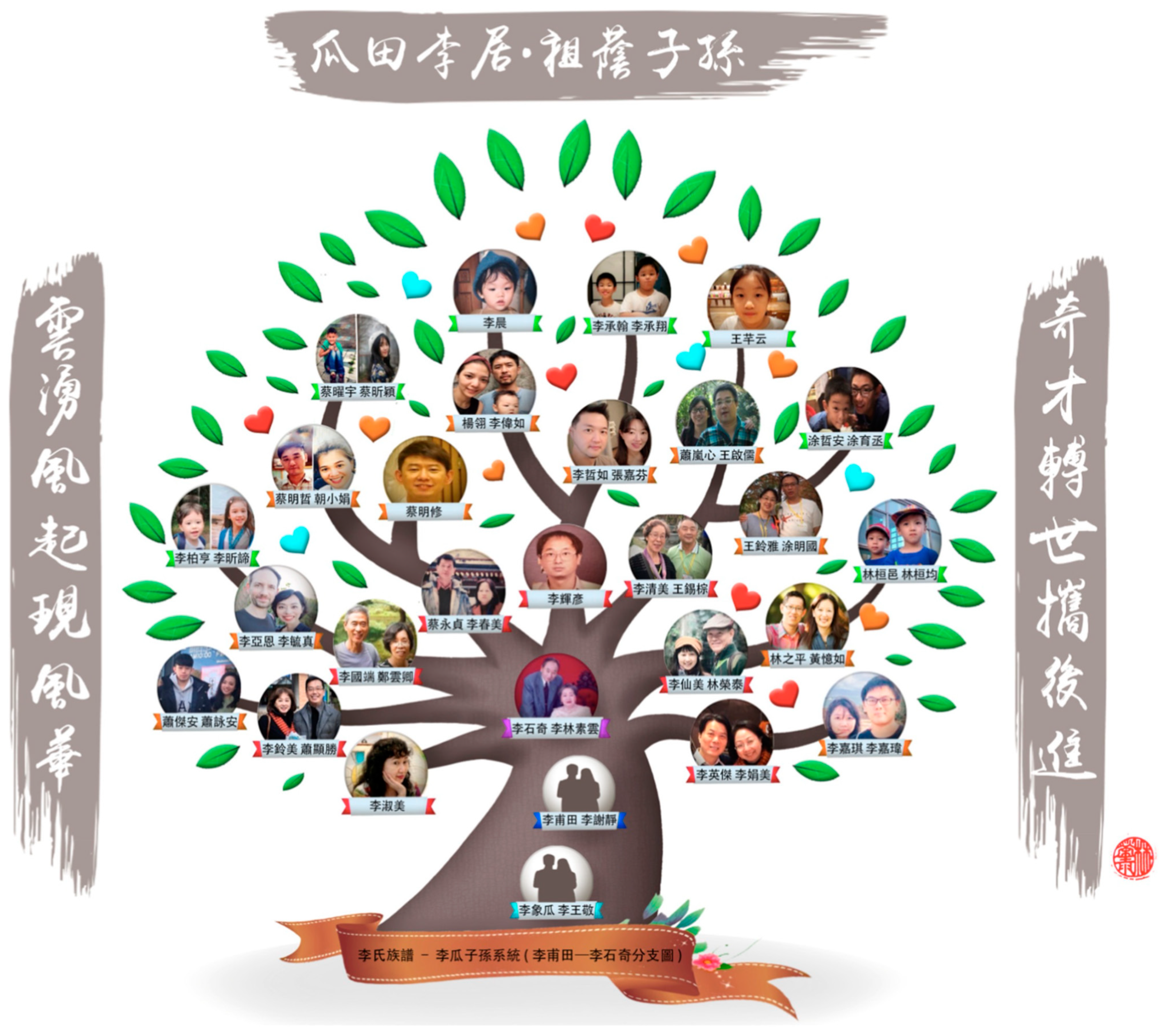

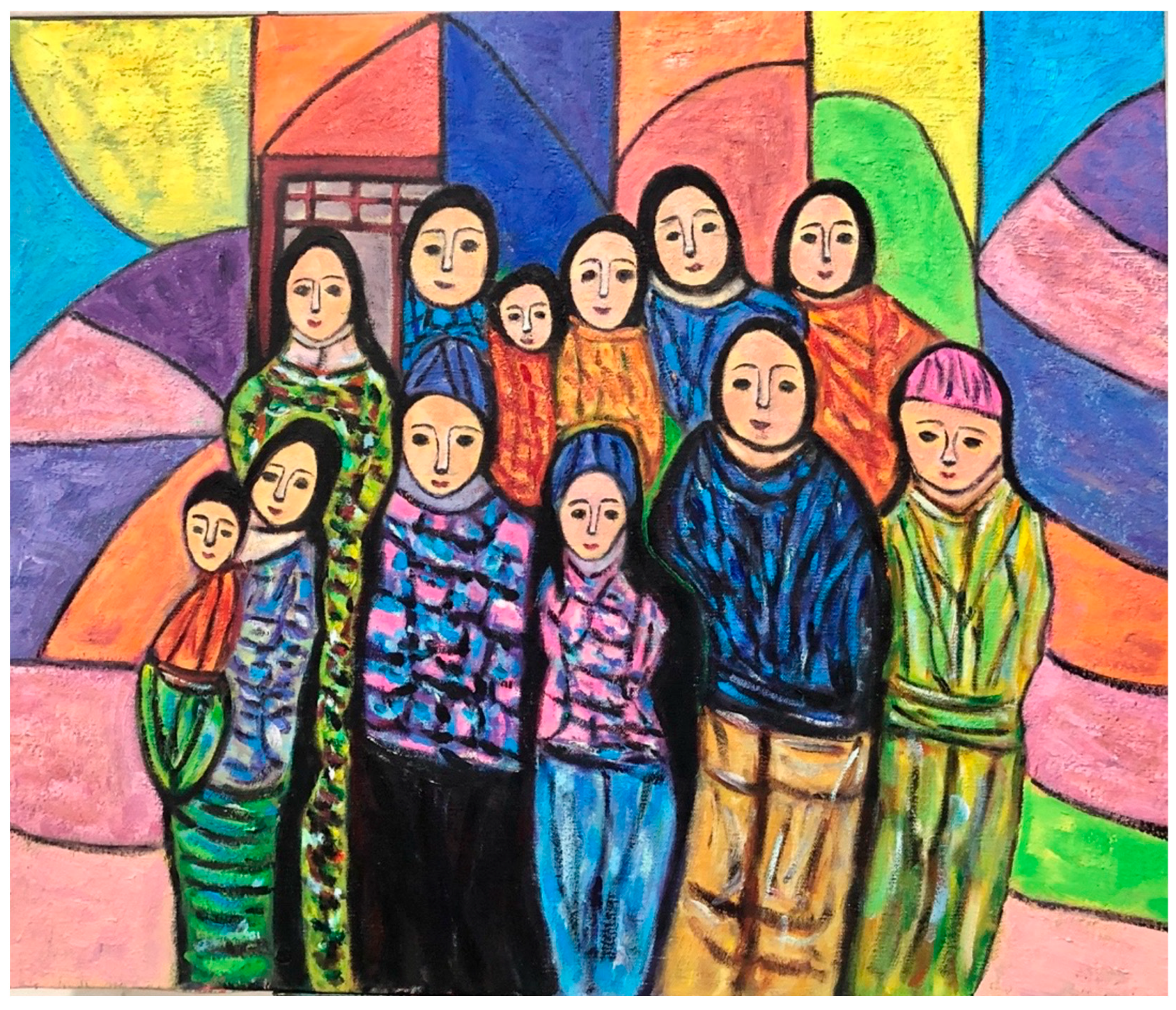


Figure 13. Paintings that reflect the strong feelings of family members. (Source: authorized by Sandy Lee).
Figure 13. Paintings that reflect the strong feelings of family members. (Source: authorized by Sandy Lee).

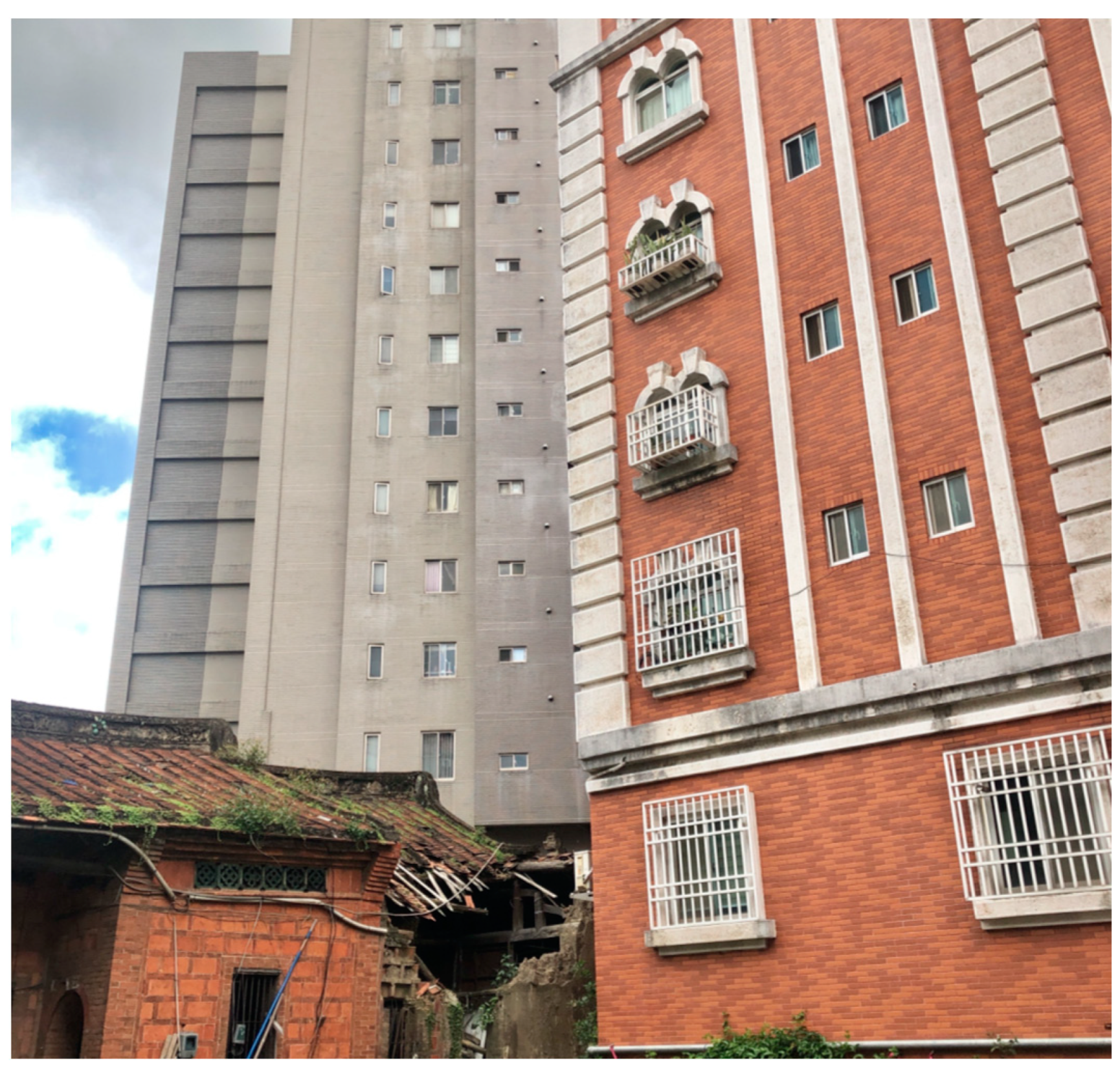
Figure 14. The intersection of the old and new residences: Transfer of “traditional” to “modernity” for the sustainability of culture. (Source: authorized by Lee family).
Figure 14. The intersection of the old and new residences: Transfer of “traditional” to “modernity” for the sustainability of culture. (Source: authorized by Lee family).


 |  |  |  |  |  |
 |  |  |  |  |  |
 |  |  |  |  |  |
Publisher’s Note: MDPI stays neutral with regard to jurisdictional claims in published maps and institutional affiliations.
© 2022 by the authors. Licensee MDPI, Basel, Switzerland. This article is an open access article distributed under the terms and conditions of the Creative Commons Attribution (CC BY) license (https://creativecommons.org/licenses/by/4.0/).
Sun, Y.; Lo, H.; Cao, J.; Lin, R. Inheritance of Traditional Family Values: A Comparative Study of Family Ancestral Shrines and Related Paintings of Lee Family. Sustainability 2022, 14, 7188. https://doi.org/10.3390/su14127188
AMA StyleSun Y, Lo H, Cao J, Lin R. Inheritance of Traditional Family Values: A Comparative Study of Family Ancestral Shrines and Related Paintings of Lee Family. Sustainability. 2022; 14(12):7188. https://doi.org/10.3390/su14127188
Chicago/Turabian Style
Sun, Yikang, Hsienfu Lo, Jing Cao, and Rungtai Lin. 2022. "Inheritance of Traditional Family Values: A Comparative Study of Family Ancestral Shrines and Related Paintings of Lee Family" Sustainability 14, no. 12: 7188. https://doi.org/10.3390/su14127188
Note that from the first issue of 2016, this journal uses article numbers instead of page numbers. See further details here.